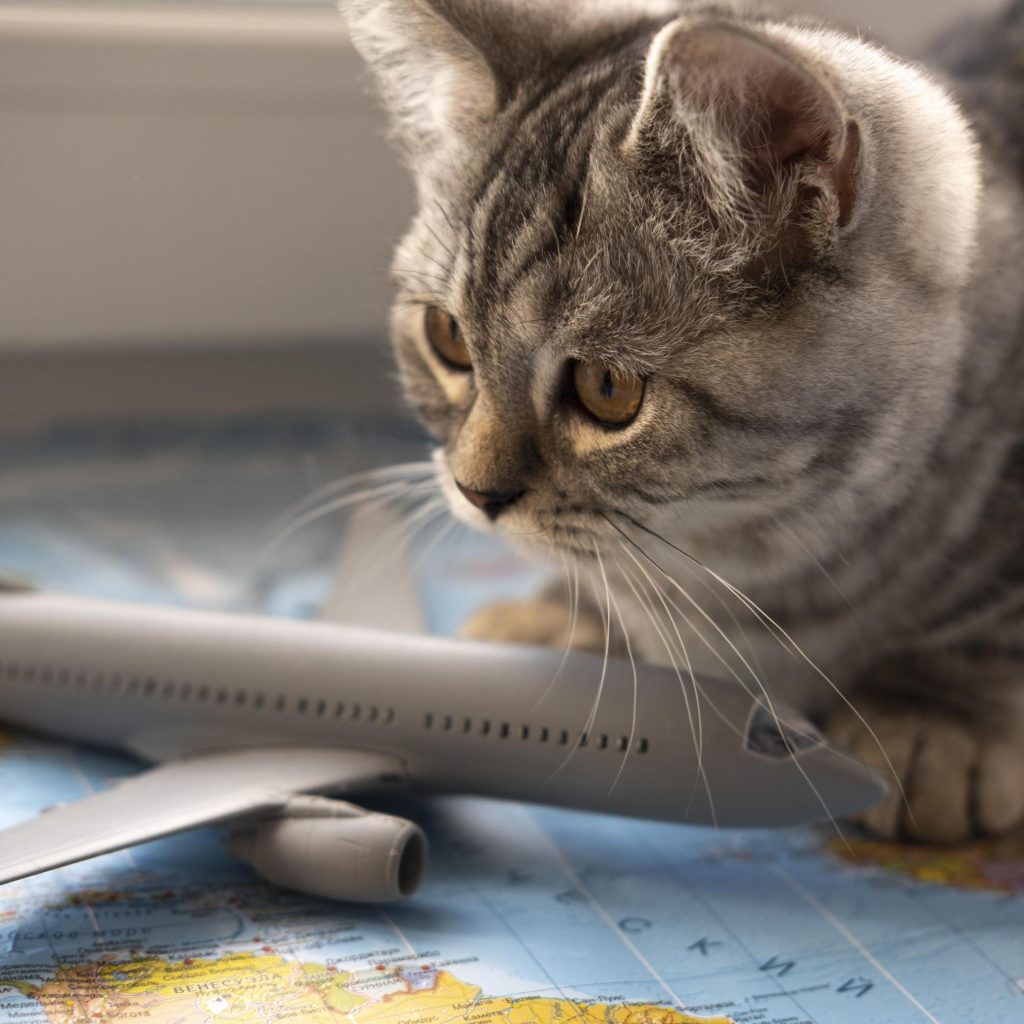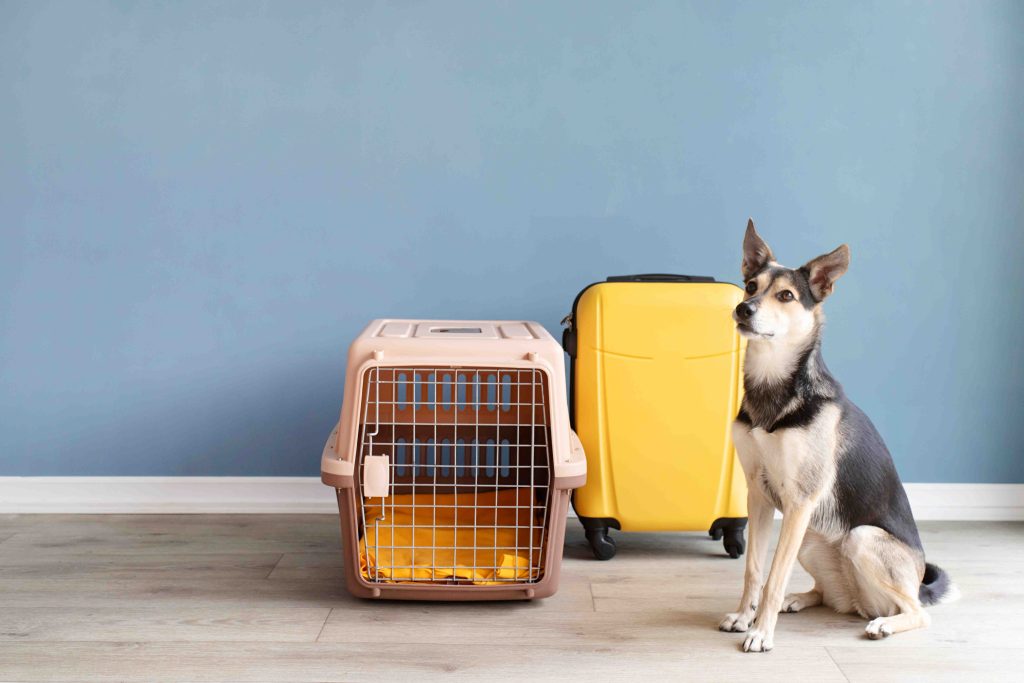Having to relocate a pet is often a stressful and exhausting process for pet parents. Rules and regulations regarding pet relocations may be complex depending on the destination, and in some cases, preparations need to be started months in advance. Additional rules may also be set by the airline making it even more complicated. Besides all the rules and regulations related to the import and export of pets, there is the additional worry pet parents have regarding the well-being of their fur family members during the move. To give a starting point in the overwhelming pile of information, we will discuss some common preparations that need to be done when you have to relocate your pet to another country in this article.
Common vaccinations needed for pet relocation.
To be able to relocate your pet, their vaccinations need to be up-to-date. Which vaccinations exactly are needed will vary from country to country as each can set their own rules about which vaccinations are required. So, before you start the process of getting the vaccinations for your pet in place, you will need to carefully check which are needed for your specific destination and what the time frame is in which they need to be given.
A vaccination required by most countries is the rabies vaccine. In most cases the vaccination needs to be given a minimum of 30 days before travel, but not later than a year at the moment of travel. This means that if your pet got vaccinated with a vaccine with a 3-year validity, they will need to be re-vaccinated if they don’t fall within the required time frame. Depending on the rabies status of the country you are traveling from, the country of destination may require an additional Rabies Titre Test (RNATT) by an accredited laboratory to determine if your pet has built up sufficient immunity after the rabies vaccination. It may also be of importance when the rabies vaccine is given in relation to the placement of the microchip, which we will discuss further down in this article under the identification paragraph.
Another common vaccination required is the DHPP vaccine for dogs, and the FVRCP for cats. This is the vaccination that is most commonly known as the “yearly” vaccination. Just like with the rabies vaccination, a specific timeframe may be applicable in which it needs to be administered and re-vaccination may be required.
Make sure that all information regarding the vaccinations is filled in correctly and completely in the pet’s passport. Other vaccinations that may be needed depending on destination are:
For cats
- FeLV
For dogs
- Leptospirosis
- Bordetella
If you would like to know more about vaccines and vaccinations, have a look at our blog named: All you need to know about pet vaccines and vaccinations

Documents needed for pet relocation.
Besides up-to-date vaccinations, you will need documents prior to traveling with your pet. You will need your pet’s passport with all their details. Additional documents required will vary from country to country, but most commonly needed are import permits, signed rabies certificates, health certificates and Rabies Titre test results from an accredited laboratory. Other required documents could for example be results from lab-specific tests like an Ehrlichia antibodies test.
Identification
To be allowed to travel your pet will need identification, which in most cases will be a microchip. In some cases, tattoos are still accepted, which was the old form of pet identification, but often these need to be placed before a certain date. An example is Europe, which will accept tattoos as a form of identification if they are placed before 3 July 2011. All information regarding the microchip (or tattoo), like date of placement, location, and identification number (sticker), should be filled in completely and correctly in the pet’s passport. When a microchip needs to be placed, one should keep in mind that some countries have rules about when the microchip should be placed in relation to the rabies vaccine. An example of this is the UK, where the microchip needs to be placed at the same time, or before the rabies vaccine. If the chip is placed after the rabies vaccination, the pet will have to be re-vaccinated for rabies. Your vet will have to make sure the microchip is readable and depending on the country the microchip might need to meet certain standards, like the ISO standard. For more information about microchips have a look at our blog named: Microchips in Pets: Everything You Need to Know

Internal/External Parasite treatment
In almost all cases pets will need to be treated for specific internal and/or external parasites before they travel. Often there is a strict time frame in which this needs to be done. There also may be rules about which specific active ingredient the medication needs to have. The treatment will need to be administered by a vet and officially documented in the pet’s passport or on a health certificate.
Restrictions on number of pets that can be imported/exported.
There are often limits to how many pets an individual can import and export. This rule does not apply to pet relocation companies. So, depending on how many pets you wish to relocate, you may have to get the help from a company to be able to move all your pets.
Banned breeds
Some breeds may be banned from import to certain countries. One should always check if the breed they are trying to relocate is accepted in the country of destination. Failing to do so or trying to bend the rules may lead to confiscation of the pet.
Snub-Nosed pets
Another rule worth mentioning is that not countries, but airlines, often have strict time frames during the year in which they fly snub-nosed pets. This is due to the increased risk of flying for them. Some airlines won’t even fly them at all.
Pet Carrier rules
Airlines will have specific rules about which carriers are allowed, how they need to be secured, and what size they need to be. Make sure that the carrier you use is approved by the airline you wish to use. Make sure to familiarise your pet with the carrier well in advance through force free training and positive reinforcement.
Conclusion
For a smooth relocation process preparation is key. You will need to start by checking what the specific requirements and rules are for the country you are traveling to. For some countries the process will be a complicated and extensive one, while for other countries it will be relatively easy. Additionally, you will need to check the rules of the airline you wish to use.
Are you feeling overwhelmed with all the information and rather have someone do the research and preparations for you, and save yourself hours of research, phone calls, and vet visits. Our pet relocation team would love to help.

